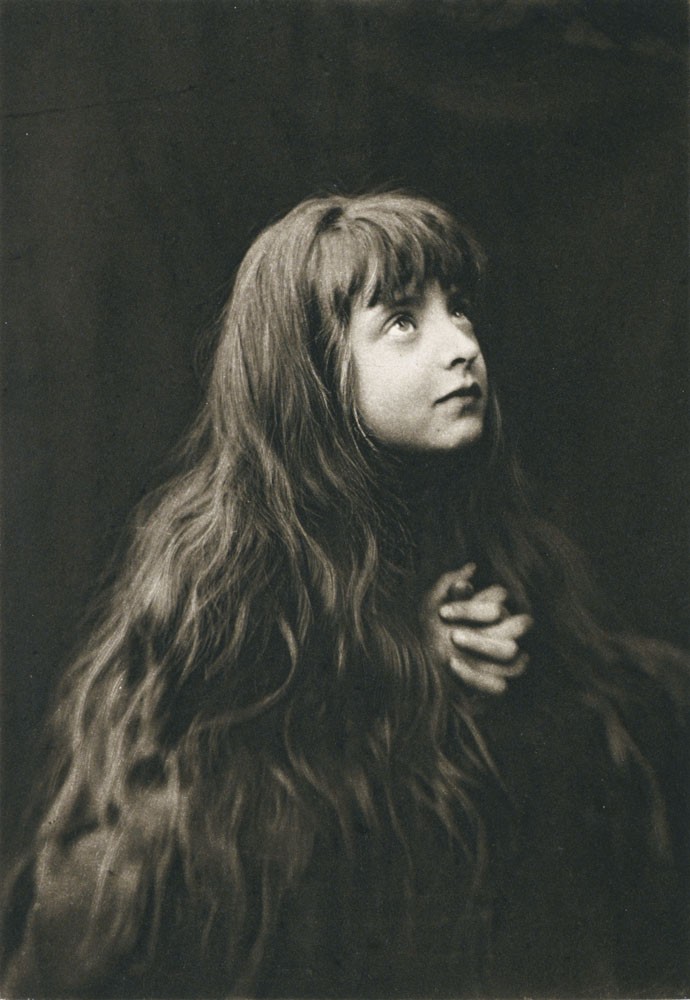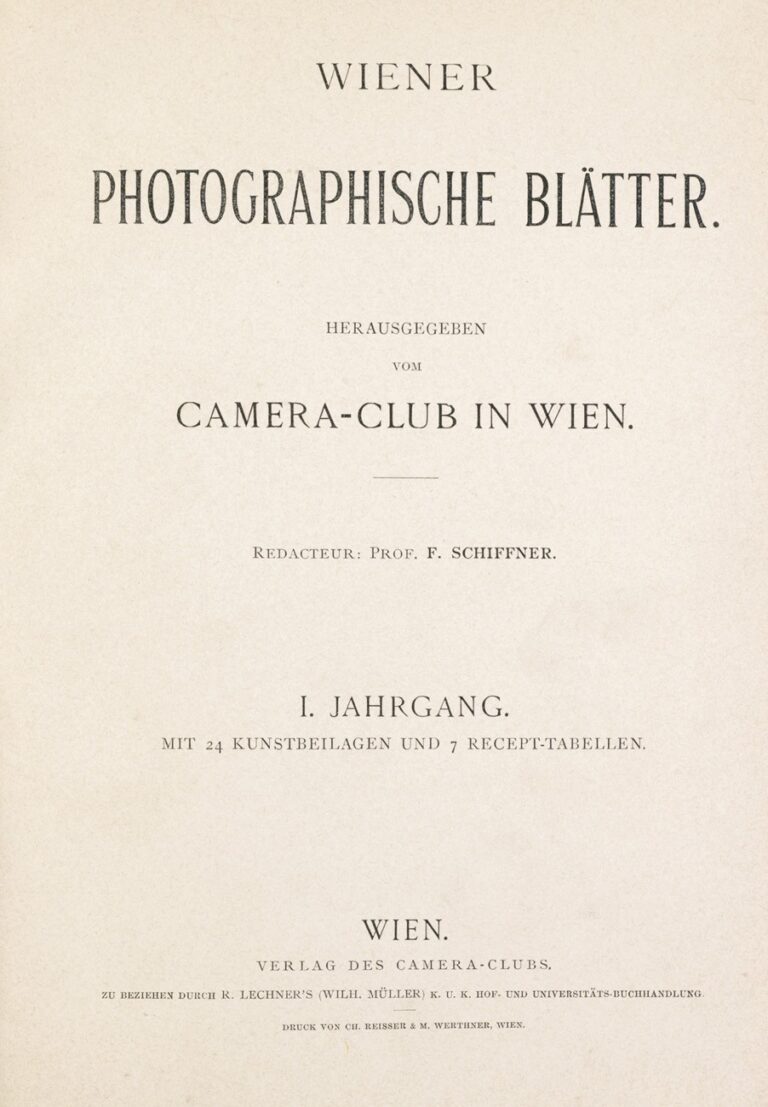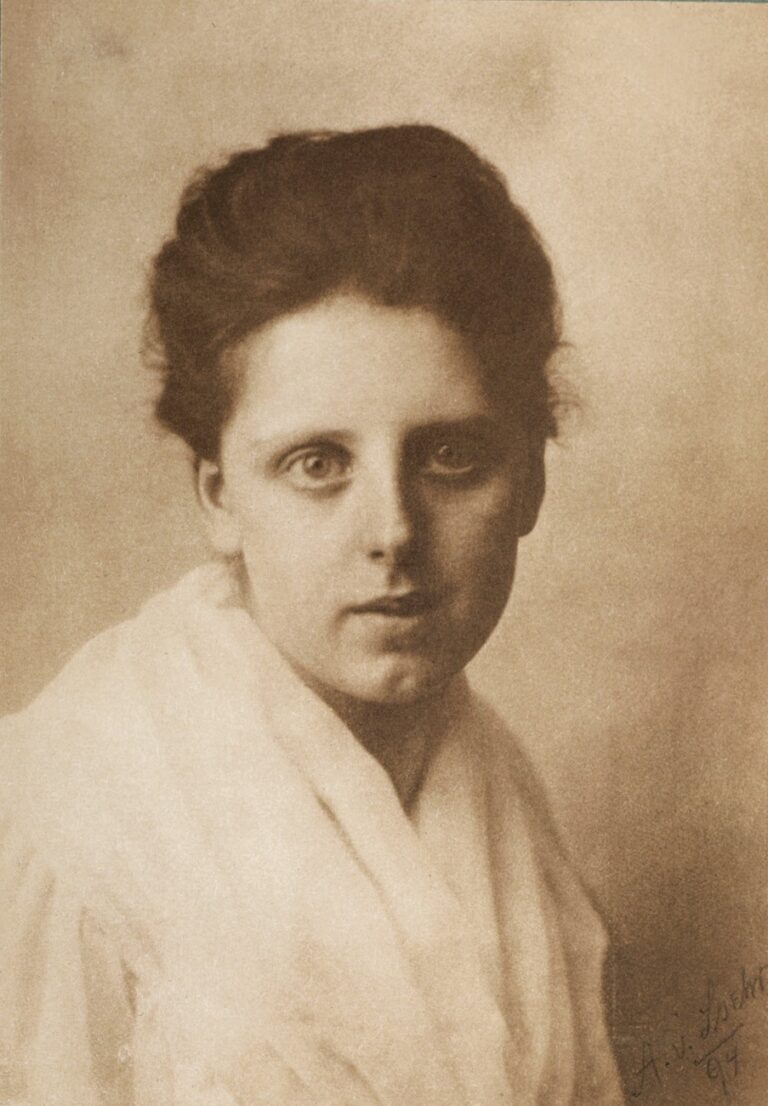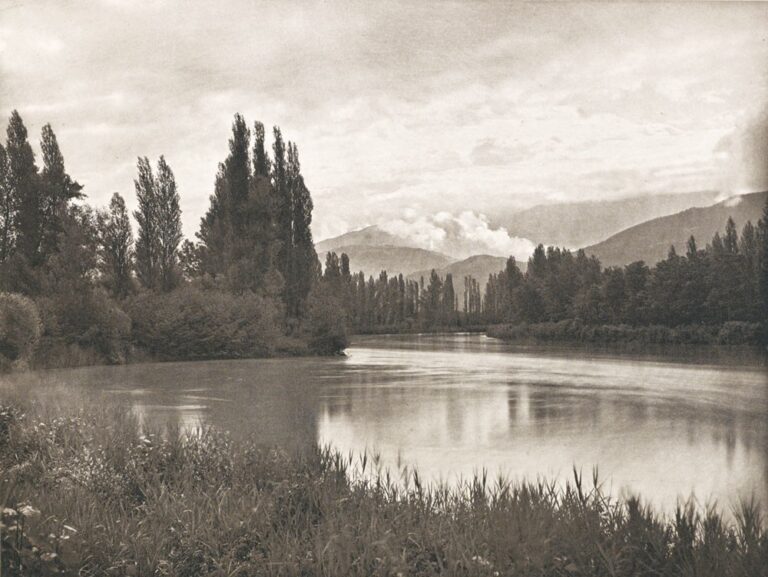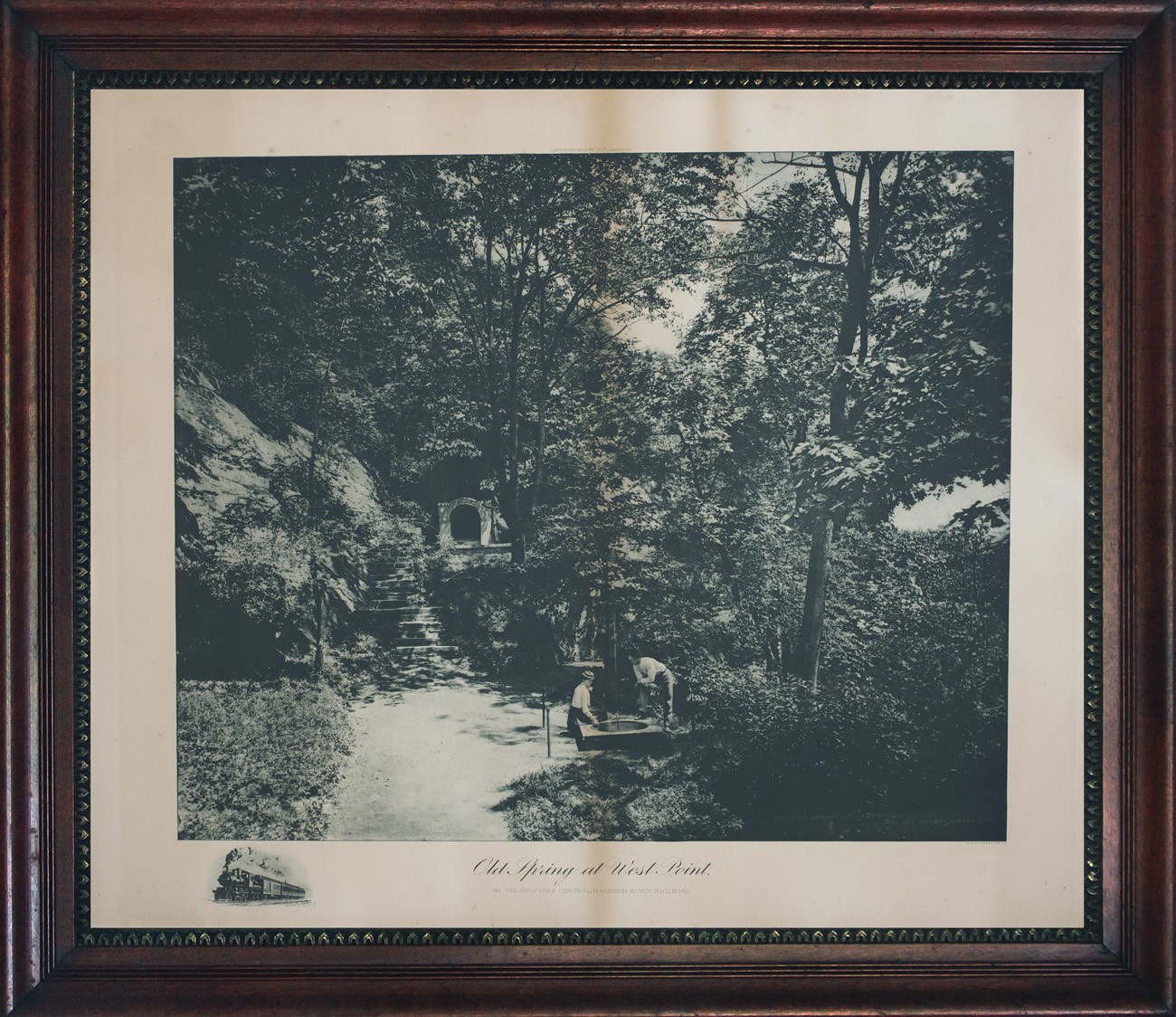
Old Spring at West Point | Kosciuszko’s Garden
American photographer William Henry Jackson (1843-1942) was commissioned in 1890 by the Passenger Department of the New York Central & Hudson River Railroad for the purpose of capturing scenic imagery along their New York routes that in turn were used for marketing purposes. Along with Syracuse-based, official railroad photographer Arthur P. Yates, (b. 1841) who supplied later photographs of the famous trains The 20th Century Limited and The Empire State Express for this campaign, their resulting large-format negatives were used beginning in1894 to produce what are believed to be the largest commercially attempted, hand-pulled photogravure prints up to that time by the New York Photogravure Company of New York City. (1.)
Described as Five Famous Etchings when first introduced to the public in 1894, they included this scenic view taken by Jackson at the United States Military Academy at West Point, titled: Old Spring at West Point. : On the New York Central & Hudson River Railroad. Passengers of the New York Central or anyone visiting the company’s offices at New York’s Grand Central Station could purchase this or the other four over-sized, 24″ x 32″ “etchings” for the price of .50 cents each, or through the mail rolled in a tube for .75 cents each.
Kosciuszko’s Garden
This bucolic scene showing a man and woman standing and sitting together around a natural spring during a lovely summer day was taken at Kosciuszko’s Garden by Jackson in 1890. A retreat garden built into the side of a cliff which overlooks the Hudson River in West Point, New York, the garden was designed and built in 1778 by Thaddeus Kosciuszko (1746-1817) and is considered one of America’s oldest gardens. A website devoted to the garden’s history and continued preservation states:
Kosciuszko’s Garden is one of the oldest continuously existing gardens in the United States. Colonel (later General) Thaddeus Kosciuszko, the Polish engineer, designed, engineered and oversaw the construction of the original fortifications at West Point while serving in the Continental Army.
During his time at West Point (1778-1780), Kosciuszko built a garden with his own hands terraced on the side of a cliff overlooking the Hudson River for the purpose of “rest and repose.” (2.)
Five Famous Etchings
One of the earliest advertisements giving descriptions for the Old Spring at West Point photogravure and the four other gravures appeared in the advertising pages of The Outlook for February 3, 1894:
Five Famous Etchings
The Passenger Department of the New York Central has just issued a series of five beautiful etchings, which artistically outrank anything of the kind ever issued by a railroad company, while the absence of any advertising feature renders them suitable for hanging in your office, library, or home.
A brief description of each, with a glance at their titles, is all that is necessary to obtain a fair idea of the pictures.
No. 1 is “Washington Bridge,” which spans the Harlem River at One Hundred and Eighty-first Street—one of the finest bridges in the world, and a marvel of engineering. In the distance is High Bridge, the Croton Viaduct; in the foreground a characteristic river scene that will be recognized by any one at all familiar with the locality.
No. 2—” Rock of Ages, Niagara Palls,” from a photo by William H. Jackson & Co., Denver. A view that has been admired by every one who has seen it. The soft tones in which it is printed add greatly to the effect of the falling waters and spray.
No. 3—”Old Spring at West Point,” also from a photo by William H. Jackson & Co., Denver. A romantic scene, recalling memories of summer days at the famous military academy.
No. 4—”999 and the DeWitt Clinton.” The famous Empire State Express Engine “999,” which occasioned such widespread comment at the World’s Fair, occupies the top half of the card, and below appears the old ” DeWitt Clinton,” affording truly remarkable example of the progress of railroad science in the past fifty years.
No. 5—”Rounding the Nose, Mohawk Valley.” One of the handsomest railroad pictures ever made. The scene is just below Little Falls.
These etchings are all printed on fine plate paper. 24×32 inches, suitable for framing. Copies can be procured at the office of George H. Daniels, General Passenger Agent. New York: E. J. Weeks, General Agent, Buffalo; F. J. Wolfe, General Agent, Albany: H. D. Carter, General Agent, Herkimer, for fifty cents each, or will be mailed in stiff tube, secure from injury, to any address, postpaid, for seventy five cents each, in currency, stamps, express or postal money order. (3.)
By 1906 or earlier, an additional five photogravures were solicited to the public, advertised in the pages of New York Central’s own publication The Four-Track News, (first appearing in 1901) and published by George H. Daniels, the passenger agent for the railroad. They were:
No. 7—Horse Shoe Fall, Niagara
No. 8—Gorge of Niagara River
No. 9—The Twentieth Century Limited (photographed by A.P. Yates)
No. 10—The Empire State Express (photographed by A.P. Yates)
No. 11—The American and Middle Falls, Niagara
By this time, perhaps because they had accumulated a surplus over the intervening years or the timing was right to bring them before the public again, these gravures were “free”. Now the “etchings” were marketed as subscription incentives to those inclined to subscribe to The Four-Track News. (4.) In order to receive one of the Jackson or Yates gravures, you had to take out a yearly subscription to the publication for yourself and a friend. Some of the advertising copy Daniels used to promote them in 1906:
Don’t miss this bargain
A RARE CHANCE to secure
BEAUTIFUL ETCHINGS
Absolutely Free of Cost.
By Sending Two New Subscriptions—Your own and that of a Friend —To that Wonderfully Popular, Successful, Entertaining and Instructive Magazine of Travel and Education
THE FOUR-TRACK NEWS
A yearly subscription to The Four-track News for a friend is a welcome reminder of you every month in the year. It is enjoyed by all, and especially by the boys and girls. What more acceptable gift could you make this year? Don’t you know a friend or two whom you would like to please? A boy or a girl or an invalid friend or acquaintance would be very appreciative of a yearly subscription to The Four-track News. These etchings are done from copper plates, by the popular photogravure process, on very heavy plate paper, 24×32 inches, and are not at all like the pictures usually given with subscriptions. They make a pleasing and very attractive decoration for the home, office, school, library, den, or any room where high grade pictures are an adornment. Their beauty, and the high character of the subjects, make them particularly appropriate, acceptable and substantial Christmas, birthday, wedding or Easter presents. They are not cheap catch-penny premium pictures, but are superb, high-grade photogravure etchings—exactly as represented.
Etchings of similar size and quality are sold in Art Stores at from. $1.50 to $5.00 per copy. The plates from which these etchings are done are our exclusive property. The etchings are not for sale by Art dealers anywhere, and can only be procured from us. Those who wish to obtain one or two etchings and receive cash remuneration for securing additional subscribers for The Four-track News will find it to their advantage to write us for particulars.
GEORGE H. DANIELS, Publisher 57 East 42ND Street, New York (5.)
Locomotive remarque by A. P. Yates
One of the fascinating features of this over-sized photogravure impression is the inclusion of a photographic remarque showing a railroad locomotive pulling a series of cars and belching a trail of smoke. Seen at the lower left corner in the print margin and uncredited, this site had determined it shows the famous “Empire-State Express” locomotive of the New-York Central Hudson-River Railroad. A.P. Yates, their official photographer, had photographed the train on the third day of its installation in November, 1891, near Syracuse “when running at 60 miles per hour on 65-lb. rails before the entire main line had been relaid with 80-lb.” (6.) The article further states the Empire State Express was “the fastest long distance train ever attempted.”
An account of the photograph by Yates, who first took up railroad photography around 1887 follows:
“On the third day of the run of the Empire State express in October, I891, the conditions all being favorable, I made the attempt to secure a picture of the fastest train in the World. Having obtained use of an additional camera from a friend, in order to have three outfits, I proceeded some distance west of Syracuse, taking with me a porter named ‘Doc.’ to help me in operating the third camera, if I needed his services. That day, locomotive No. 862, Engineer Charles Hogan, made the first nine miles after leaving the Syracuse station six minutes late, in eight and one-half minutes. It was while running at this high rate of speed, which was fully sixty miles an hour, that two good negatives were secured. An amusing incident in connection with this occasion is well worth relating. The cameras were set up in position some fifteen or twenty minutes before-hand in order to have everything in readiness. During that time I drilled ‘Doc.’ and told him what he should do, which merely consisted in pressing a bulb when I gave the proper signal. On came the express, and as it thundered by, with dust flying in the air, I gave the signal and shouted. But ‘Doc.’ shouted as loud as I did, but so rattled was he by the experience that he forgot to press the bulb, and could only exclaim with wonderment, ‘How like the devil she went.’ Fortunately the results of the two cameras I operated were good, so that ‘Doc’s’ failure did not embarrass me. ‘Doc’s’ experience as an assistant was short lived. The picture obtained on that day has since become famous, and has been viewed by thousands, not alone on this continent, but abroad. The negative, with a cut-out of two and one-half inches by three and one-half inches, was reproduced and enlarged five by eight feet, thus making the largest bromide print ever made. That was the large picture you saw in the New York Central exhibit, and also in the Liberal Arts building at the World’s fair at Chicago in 1892 I believe it was awarded a medal by the Fair Commissioners, but I have not yet received it. The picture has since been reproduced and published in magazines and public prints in this country and in Europe, and while it is one of my earlier specimens of instantaneous photography, it is considered by critics one of the finest extant.” (7.)
Print details:
Photogravure is presented here in its original circa 1896 ornate wood frame. Originally 24″ x 32″ in size, the print has been cut down to accommodate the frame. Glass has been removed and gravure photographed separately to provide an accurate color representation, with the original advertising copy for the print stating: “Photogravure Etching in Green“.
On print recto faintly seen in lower right margin of image: 1518 (?) The Spring at West Point N.Y. W.H. Jackson & Co. Denver CO.
Non-conserved print with slight “burn” lines seen at center of image a result of wood backing panels used in framing
Copyright of 1890 along the top margin of the image: Copyright 1890 by W.H. Jackson.
Photograph re-purchased from dealer in March, 2010: originally from Medfield, Massachusetts estate. Frame backing material included several broadsheet pages from newspapers including The World (N.Y. city) from March 29, 1896 and The Daily News (Springfield, MA) from April 8, 1896.
Notes:
1. The David A. Hanson collection of the history of photomechanical reproduction at the Sterling and Francine Clark Art Institute Library in Williamstown, Massachusetts, which owns a singular example: Gorge of Niagara River (etching No. 8) states:”This is one of a series of large display photogravures that William Henry Jackson executed for the New York Central for their passenger waiting rooms. This plate size has to be one of the biggest used commercially during this time period. Larger plates have not been noted in any bibliographies or histories.”–Hanson Collection catalog, p. 105
2. Kosciuszko’s Garden website: contact: Dr. Betsey Blakeslee. The site states the garden and adjoining “Flirtation Walk” are maintained by the efforts of the “West Point Volunteers, the West Point Garrison, the Department of Military History, the West Point Museum, The Kosciuszko Foundation, The Association for the Friends of Kosciuszko at West Point, the Hudson River Valley Institute, the Constitution Island Association and other important organizations and volunteers.” (site accessed June, 2013)
3. advertisement: Five Famous Etchings: in: The Outlook: New York: February 3, 1894: p. 202
4. The Four-Track News: “An Illustrated Magazine of Travel and Education” was a monthly that was international in scope first published in 1901. Originally priced at .50 cents for a year subscription, it was $1.00 a year by 1906.
5. advertisement: in: The Four-Track News: John K. Le Baron, Editor: New York: January, 1906: advertising section: pp. 57-61
6. excerpt: Bulletin of the International Railway Congress (English Edition): Brussels: published by P. Weissenbruch: January, 1899: Vol. XIII: no. 1: p. 7. (photograph of train, indicating it is Locomotive No. 862, appears on p. 11) Arthur P. Yates: b. 1841. The reference to November is incorrect: should be October. (inaugural run of train was on Sept. 14, 1891)
7. excerpt: Railroad Photography: in: New York Railroad Men: New York: February, 1896: pp. 106-07
